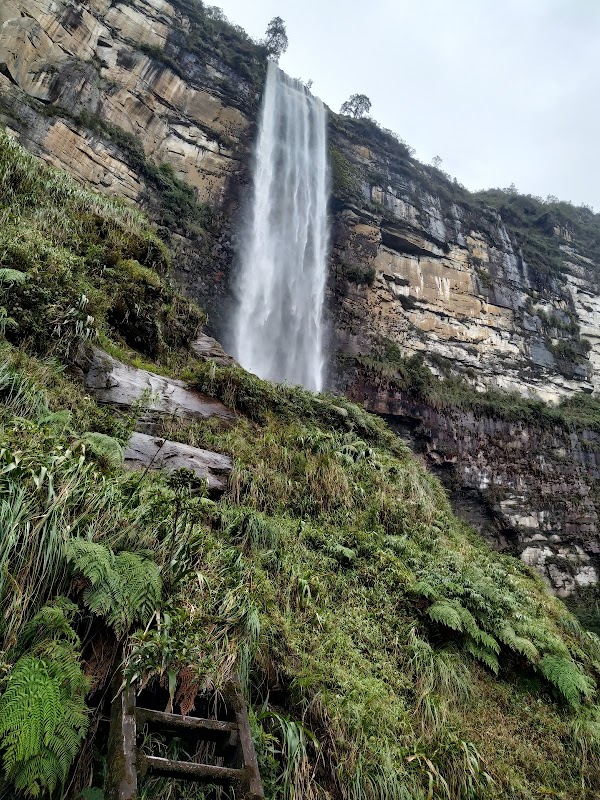Hiking to Kuelap Fortress: Exploring Peru’s Cloud-Crowned Pre-Inca Marvel
Kuelap Fortress stands as a breathtaking pre-Inca marvel perched high in Peru’s cloud forest, blending history and rugged adventure. Discover a challenging hike through thick forests and ancient stone walls, offering unforgettable views and a glimpse into a fiercely unique culture.
Start early to beat the clouds
The fortress often gets enveloped in mist by midday, reducing visibility. Morning hikes offer clearer views and more comfortable temperatures.
Wear sturdy hiking shoes with good traction
The trail includes uneven stones and slippery moss-covered surfaces, particularly after rain, making solid footwear crucial for safety and comfort.
Carry at least 2 liters of water
The climb is steady and humid; staying hydrated prevents fatigue and altitude-related discomfort during the 3-4 hour ascent.
Prepare for changeable weather
Bring layers and waterproof gear as the mountain climate swings between warm sun and sudden cool mist, sometimes within the same hour.
Hiking to Kuelap Fortress: Exploring Peru’s Cloud-Crowned Pre-Inca Marvel
Rising sharply from the verdant slopes of Amazonas, Peru, Kuelap Fortress waits atop a mountain constantly brushed by clouds—a stronghold that once defended the Chachapoyas, the “Warriors of the Clouds.” This pre-Inca architectural marvel, built of massive limestone walls and circular stone dwellings, offers more than history: it provides a true highland adventure.
The hike to Kuelap begins near the village of Tingo, just outside the city of Chachapoyas. From the starting point at around 2100 meters elevation, expect an ascent of roughly 750 vertical meters over 5 to 6 kilometers through dense cloud forest. The trail cuts through moss-draped trees whose branches seem to reach out, daring you forward. Ferns crowd the path edges, and small rivers chatter with urgency as currents push relentlessly downhill.
Terrain varies between soft soil, stone stairs carved into rock, and occasionally slippery moss patches, especially after rain. Footwear with good grip is non-negotiable. The air grows thinner, cooler, and moist, whispering the mountain’s fierce independence.
Arriving at the fortress, the scale of the stone walls—up to 20 meters tall—commands respect. Wander among circular structures, imagining the lives led centuries ago. The surrounding views are wide and wild, clouds drifting between ridges like restless spirits guarding the realm.
Timing is key: early mornings bring fresher air and fewer crowds, while afternoons risk mist thickening to near-zero visibility. Hydrate steadily and pack enough energy snacks—the climb is steady and demands endurance but rewards with unforgettable vistas.
Kuelap isn't just an excursion; it’s a dynamic engagement with nature and culture, a chance to meet a mountain solidly rooted in its own history and landscape. Treading this path prepares you for the encounter, promising an outdoor adventure where every step reveals something fiercely itself.
Nearby Trips
All Adventures
Boat Charters
Water Activities
Adventures near Chachapoyas
Discover the unique and memorable adventures that make Chachapoyas special.
Frequently Asked Questions
How do I get to the Kuelap trailhead from Chachapoyas?
The trailhead is accessible from the village of Tingo, about a 30-minute drive from Chachapoyas. Local transport options include taxis or shared minivans; many travelers arrange rides through their accommodation.
Is the hike to Kuelap suitable for children or beginners?
While the hike is moderate in difficulty, it requires steady uphill walking over uneven terrain. Children and beginners in good health can attempt it if they are prepared and take breaks. Hiring a guide or using the cable car alternative can ease the challenge.
Can I use the cable car to access Kuelap instead of hiking?
Yes. A cable car connects the Tingo area to a station near Kuelap, reducing the hike from 5 hours to under 30 minutes walking. It’s advisable to check schedules and book tickets in advance during peak seasons.
What wildlife might I encounter on the trail?
The cloud forest is home to a variety of birds like toucans and hummingbirds, as well as spectacled bears (rarely seen). Insects and butterflies are plentiful, and early mornings might catch glimpses of capuchin monkeys.
Are there guided tours available for the hike to Kuelap?
Several local agencies in Chachapoyas offer guided hikes, providing historical background, navigation assistance, and logistical support. Guides enhance the understanding of cultural significance and natural surroundings.
What provisions should I bring for the hike?
Bring at least 2 liters of water, energy snacks, sun protection, rain gear, and layered clothing. A camera and binoculars will enrich your experience, but keep your pack light for easier mobility.
Recommended Gear
Hiking boots with ankle support
Provide traction and protect ankles on rocky and slippery sections of the trail.
Hydration system or water bottles
Essential for maintaining hydration during the steadily climbing trek through humid forest.
Light rain jacket or poncho
Protects against unexpected showers and mist common in cloud forest environments.
Layered clothing
Allows you to adjust to rapid temperature changes from cool mornings to warmer midday.
Local Insights
Hidden Gems
- "Pisaq Uyo – an archaeological site with stone sarcophagi just below Kuelap."
- "The fortress’s mushroom-shaped stone structures, peculiar to Chachapoyas culture."
- "Quiet viewpoints east of the fortress offer sweeping valley vistas rarely visited by tourists."
Wildlife
- "Chachapoya’s cloud forests shelter the Andean cock-of-the-rock, a vibrantly colored bird prized by birdwatchers."
- "Observe moth species that appear as flickering shadows with the evening light."
History
"Kuelap was constructed between 500 and 800 AD by the Chachapoyas culture and served as a political and defensive hub. The fortress’s thick walls and strategic hilltop location reflect a fierce commitment to protection against invaders, long predating Incan presence."

